How harnessing social networks at work makes the whole greater than the sum of its parts.
How did humans come together to accomplish what they could not do on their own?
Relationships.
Life is all about relationships and work is no exception.
Relationships are built through connections.
Connections are the pillar that supports every successful person and every meaningful pursuit.
When we are connected to more than a few relationships we call them social networks.
Just as brains can do things that no single neuron can do, so can social networks do things that no single person can do.
One type of social networks is the organization, your company for example.
Organizations are a kind of human superorganism. They grow and evolve. All sorts of things flow and move within them. These superorganisms have their own structure and culture. Ideally with a common and meaningful purpose.
They say, “The whole is greater than the sum of its parts”
How exactly does the whole come to be greater?
Where does the “greater” part come from?
We can increase the effectiveness of human beings by as much as an order of magnitude simply by arranging them differently.
But what is it about combining people into groups with particular configurations that make them able to do more things and different things than the individuals themselves?
While a network, like a group, is a collection of people, it includes something more: a specific set of connections between people in the group.
These ties and the particular pattern of these ties are often more important than the individual people themselves.
They allow groups to do things that a disconnected collection of individuals cannot.
Networks do amplify talent.
These ties explain why the whole is greater than the sum of its parts. And the specific pattern of the ties is crucial to understanding how networks function.
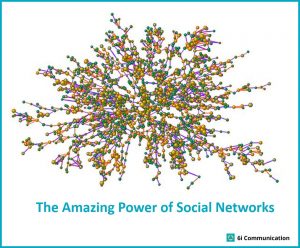
Some notions of social networks
- Lives are changed when people connect.
- Real, everyday social networks evolve organically from the natural tendency of each person to seek out and make many or few friends, to have large or small families, to work in personable or anonymous workplaces.
- We have the conscious or unconscious tendency to associate with people who resemble us. Birds of a feather flock together.
- Our place and involvement in the network affect us in turn.
- We have strong and weak ties. Strong ties bind us together into groups. Weak ties bind groups together into the larger society and are key for the spread of information.
- What flows across the connections is crucial.
- One fundamental determinant of that flow is the tendency of human beings to influence and copy one another.
- People do not copy only their friends. They also copy their friends’ friends and their friends’ friends’ friends.
- We might trust socially distant people less, but the information and contacts they have might be intrinsically more valuable to us because we cannot access them ourselves. Much more valuable compared to a close circle of friends where it is likely that people know more or less everything that their close friends know.
- Under the right circumstances, groups are remarkably intelligent and are often smarter than the smartest people in them. Groups do not need to be dominated by exceptionally intelligent people in order to be smart.
Social networks at work
In a social network like the workplace, our friends and colleagues can influence us to do things, like work longer, work smarter or live the values of the organization.
But their friends and colleagues can influence us too. This is an illustration of hyper-dyadic spread, or the tendency of effects to spread from person to person to person, beyond an individual’s direct social ties.
Social networks can have properties and functions that are neither controlled nor even perceived by the people within them.
These properties can be understood only by studying the whole group and its structure, not by studying isolated individuals.
Simple examples include bees, stampedes or traffic jams. You cannot understand a traffic jam by interrogating one person fuming at the wheel of his car, even though his immobile automobile contributes to the problem.
Mathematical models of swarms of bees that move together demonstrate the same point: there is no central control of the movement of the group, but the group manifests a kind of collective intelligence that helps all within it to get to the destination.
This behaviour does not reside within individual creatures but, rather, is a property of groups.
Social networks obey rules of their own, rules that are distinct from the people who form them.
Social networks build their own culture. That unique sum of a company’s values, traditions, beliefs, interactions, behaviours and attitudes.
That company culture functions like a company’s immune system. A healthy culture is resilient, able to manage external challenges, identify internal weaknesses, root out toxic elements and allow both the business and the employees to grow and flourish.
Three Degrees of Influence
In context with Network Theory, you might have heard about “Six Degrees of Separation”.
But have you heard about “Three Degrees of Influence”?
Everything we do or say tends to ripple through our network, having an impact on our friends (one degree), our friends’ friends (two degrees), and even our friends’ friends’ friends (three degrees).
Our influence gradually dissipates and ceases to have a noticeable effect on people beyond the social frontier that lies at three degrees of separation.
Likewise, we are influenced by friends within three degrees but generally not by those beyond.
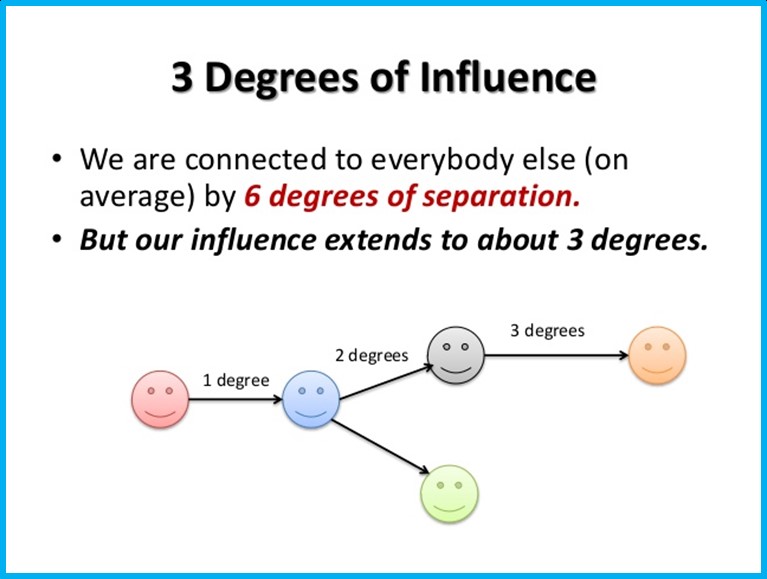

Take our happiness, for example:
Mathematical analyses of the network suggest that a person is about 15 percent more likely to be happy if a directly connected person (at one degree of separation) is happy. And the spread of happiness doesn’t stop there.
The happiness effect for people at two degrees of separation (the friend of a friend) is 10 percent, and for people at three degrees of separation (the friend of a friend of a friend), it is about 6 percent. At four degrees of separation, the effect peters out.
That Three Degrees Rule appears to be an important part of the way human social networks function, and it may continue to constrain our ability to connect, even though technology gives us access to so many more people.
But let’s get back to work.
If we want to understand how companies work, we need to fill in the missing links between individuals.
We need to understand how interconnections and interactions between people give rise to wholly new aspects of human experience that are not present in the individuals themselves. If we do not understand social networks, we cannot hope to fully understand the dynamics within an organization.
Side Note – If people are connected to everyone on earth by six degrees of separation and if people can influence those up to three degrees then people can, in some sense, reach “halfway” to anyone in the world.
Emotions – we all have them
We’d like to believe that we are rational human beings. Ample research has proven, however, that we are above all emotional human beings where the heart decides first and tells the brain to come up with a rational reason for our doing.
Emotions of all sorts, joyful or otherwise, can spread between pairs of people and among larger groups. Consequently, emotions have a collective and not just an individual origin. How you feel depends on how those to whom you are closely and distantly connected feel.
Our emotions and moods are affected by the emotional states of the people we interact with – and we don’t really interact with directly.
Internal communication could – maybe should – take advantage of our deep-rooted tendency of human beings to exhibit emotional contagion.
Emotional contagion can even take place between strangers, after just ephemeral contact. When waiters are trained to provide “service with a smile,” their customers report feeling more satisfied, and they leave better tips.
Emotions may even be a quicker way to convey information about the environment and its relative safety or danger than other forms of communication, and it seems certain that emotions preceded language.
What emotions lack in specificity compared to oral language, they may make up for in speed.
Emotions spread from person to person because of two features of human interaction: we are biologically hardwired to mimic others outwardly, and in mimicking their outward displays, we come to adopt their inward states.
If your friend feels happy, she smiles, you smile, and in the act of smiling you also come to feel happy.
Like a single startled buffalo within a herd, a single emotional reaction in one person can sometimes cause many others to feel the same thing, creating an emotional stampede.
Connection at work is how we emotionally bond with our employees, colleagues and customers.
Yes, we are all capable of thinking with our heads, but it is our hearts that keep in touch with the crowd.
Reach and connect with everyone on the team
Usually, when we think of frontline employees and factory workers, we tend to think of poorly educated, working-class individuals directed by a management team with conflicting motivations and agendas.
That was not the environment I used to work in.
Many of the workforce had a good education, some from great schools, but were questioning ‘what life was all about’.
They wanted to simplify their lives with an easy job that paid the bills.
Some of them enjoy getting lost in the simple process of packing items into cardboard boxes and passing them along the conveyor belt, knowing that at the end of the day they could just clock off and go home.
I quickly understood that you could not communicate with all of these people in the same way and expect meaningful connections.
When I speak to a person in my preferred way, I speak to their head. When I speak to them in a way that matches their personality, I speak to their heart!
If your goal is to form deeper connections with professional colleagues, then you must learn how to ‘tune in’ to these people before you ‘broadcast’ on their preferred communication channel.
Successful communication is identifying what the other person is seeking from the relationship and helping them to achieve it.
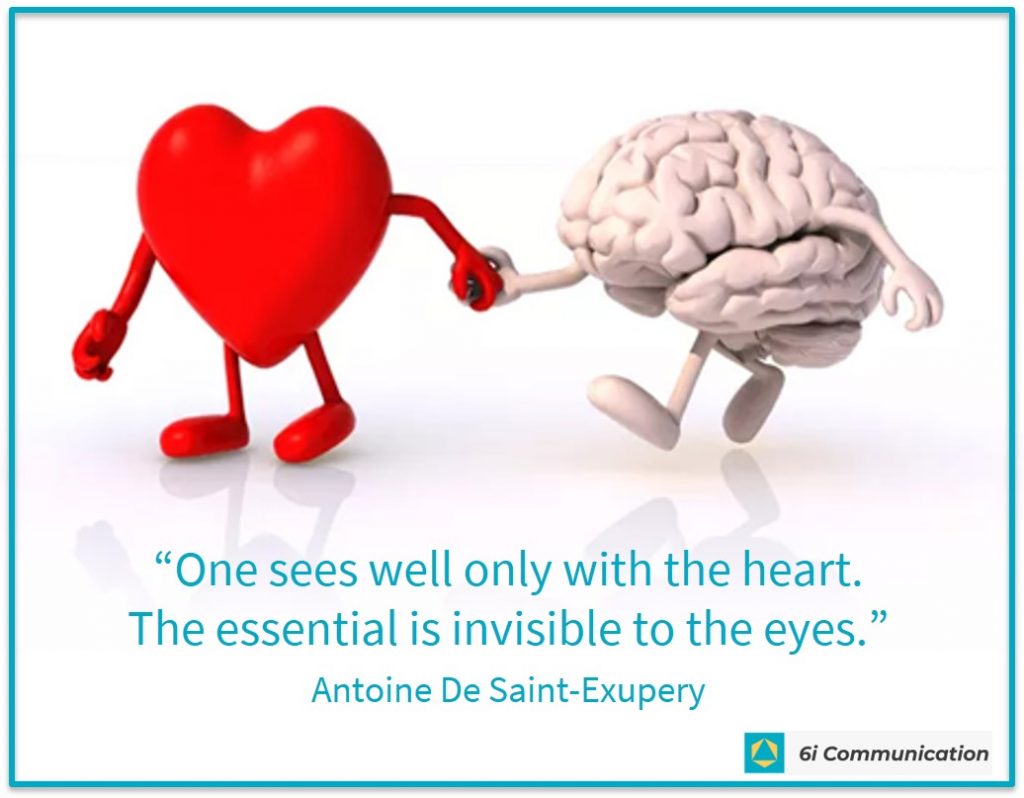

Corporate values translated into desired behaviours
How does your company define success?
Is it high customer satisfaction? Is it high shareholder value? Is it profits?
Whatever it is, those are the outputs.
So, what are the inputs then?
Really the only inputs your company can help support are employee behaviours.
It is the employees’ behaviours, products they build, services they provide and problems they solve which are the only things you as a leader can have a direct impact on.
Getting all of your people aligned with your strategy and vision is the real sweet-spot of leadership.
The key is seamless communication with your people no matter where and when they work or what language they speak to influence their behaviours – fast.


Behavioural imitation is the catalyst for speedy alignment.
Behavioural imitation can be either conscious or subconscious.
For example, when we see someone eat or run, our mirror neurons fire in the same part of the brain that would be activated if we ourselves were eating or running.
It is as if our brains practice doing something that we have merely been watching. And this practice, in turn, makes it easier for us to exhibit the same behaviour in the future.
More connections within groups can reinforce a behaviour in the groups, but more connections between groups (in what is known as an integrated network) can open up a group to new behaviours and to behavioural change – for better or for worse.
An even more efficient approach is to target the hubs of the networks, namely, those people at the center of the network or those with the most contacts. These influencers or informal opinion-leaders can be easily identified with the right kind of data analytics tool.
And then make use of their Three Degrees of Influence to get your messages to the maximum number of people in the shortest possible time and with the highest degree of acceptance / compliance.
We live and work in networks
As human beings, our connections, or relationships, are formed through our ability to communicate.
The quality of our life is therefore directly linked to the quality of our relationships. And we need to know how to communicate better if we are to form deeper connections with others, as well as with ourselves.
Deeper connections with those close to us — family, friends, work colleagues, pets, pet rocks if that’s the extent of your social group — are formed through our quality communications, first with ourselves and then with others.
Our social networks are ever faster and larger as we text, e-mail, Twitter, and BeeKeep all the people we know (and even people we don’t). And this new world certainly gives us a bird’s-eye view of the social networks in which we work, making us more conscious than ever of the importance of being connected.
The miracle of networks supported by new technologies in the modern world of work is that they unite us with other human beings and give us the capacity to cooperate on a scale so much larger than the one experienced in our past where those technologies were not available yet.
Our embeddedness in social networks means that we must cooperate with others, judge their intentions, and influence or be influenced by them.
Our corporate life is not a solo performance! We need to communicate well with others to change our life for the better.
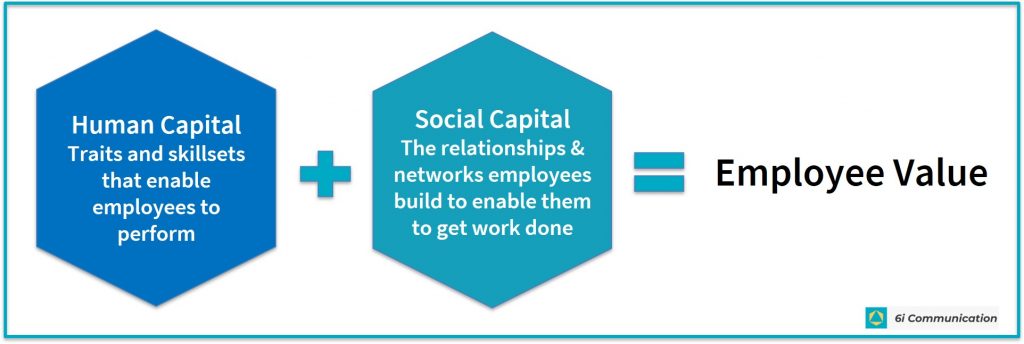

Those social networks have value precisely because they can help us achieve what we could not achieve on our own. They tend to magnify whatever they are seeded with. Once networks are established, altruistic acts—from random acts of kindness to cascades of best practice sharing —can spread through them.
In short, we don’t just live in groups, we live and work in networks.
Social networks are under our skin.
We do not cooperate with one another in those networks because a state, a boss or a central authority forces us to.
Instead, our ability to get along emerges spontaneously from the decentralized actions of people who form groups with connected fates and a common purpose.
But the surprising power of social networks is not just the effect others have on us. It is also the effect we have on others.
You do not have to be a superstar to have this power. All you need to do is connect. The ubiquity of human connection means that each of us has a much bigger impact on others than we can see.
When we take better care of ourselves, so do many other people. When we practice random acts of kindness, they can spread to dozens or even hundreds of other people. And with each good deed, we help to sustain the very network that sustains us.
Copying from Nature
Social networks can manifest a kind of intelligence that augments or complements individual intelligence. We call that “Swarm Intelligence” or “Wisdom of Crowds”, the way a beehive is “intelligent” even if individual bees are not.
A beehive’s achievements are made possible by the coordinated efforts and seamless communication of many individuals regardless of the intelligence of the individual members.
A beehive survives on the basis of connection, cooperation and decentralization.
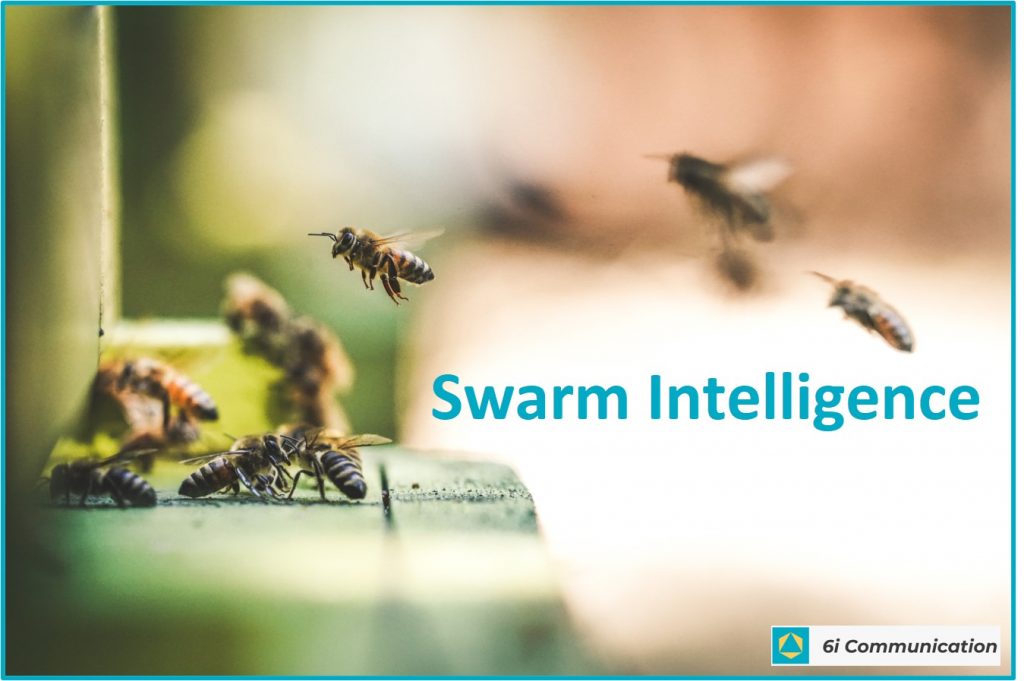

Many bosses believe that valuable knowledge is concentrated in very few hands (or, rather, in a very few heads). They assume that the key to solving problems or making good decisions is finding that one right person who will have the answer.
Decentralizing decision making on the other hand implies that if we set a crowd of self-interested, independent people to work in a decentralized way on the same problem, instead of trying to direct their efforts from the top-down, their collective solution is likely to be better than any other solution an individual could come up with.
Another Side Note: Decentralization’s great weakness is that there’s no guarantee that valuable information that is uncovered in one part of the organization will find its way through the rest of the organization. Sometimes valuable information never gets disseminated, making it less useful than it otherwise would be. Here’s where striking a balance between the local and the global is essential: a decentralized system can only produce genuinely intelligent results if there’s a means of aggregating the information of everyone in the system. Without such a means, there’s no reason to think that decentralization will produce a smart result. Aggregation is therefore paradoxically important to the success of decentralization.
Still, companies have remained, for the most part, indifferent to that source of potentially excellent information, and have been surprisingly unwilling to improve their decision making by tapping into the collective wisdom of their employees.
Yet today, competitiveness is no longer determined by a few smart individuals or the sum of all efficiencies within a business, but the sum of all connections – especially those weak ties.
Further reading: Mark S. Granovetter – The Strength of Weak Ties
The flow of information within organizations should not be dictated by management charts
Yes, strong hierarchical ties provide bonds, but weak ties serve as bridges: they provide more efficient access to new information.
Our strong ties tend to travel in the same social circles and know about the same opportunities as we do. Weak ties are more likely to open up access to a different network, facilitating the discovery of original leads and ideas.
How to build more weak connections at work that improve the flow of information?
Mobile is the new reality.
An in-house social technology is the ideal mobile platform to build more of those weak ties across the silos and geographies of any organization.
Better internal communication is an inside out job to build better social networks at work for better business results.
Because work is still a team sport and all of us are still smarter than one of us.
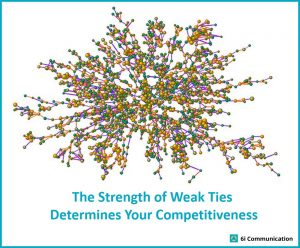

9 Ways You Could do Better when Communicating with your Frontline Workers
